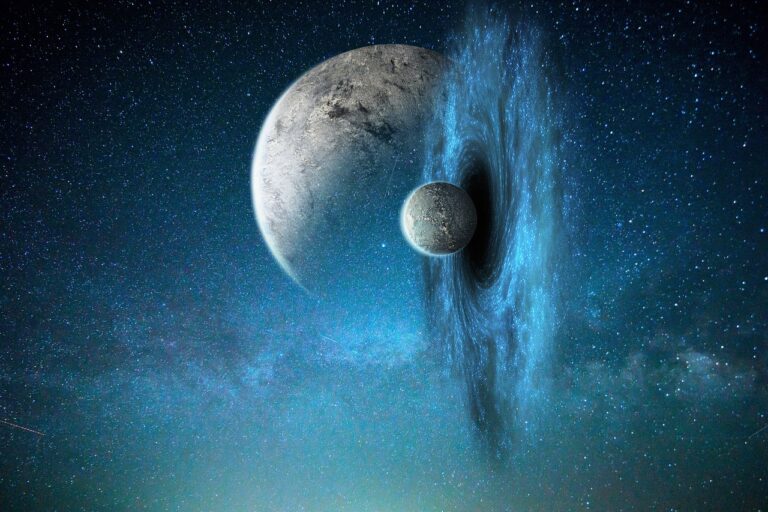Nowadays, spaceflight no longer surprises anyone. The media regularly report on new launches, and the services provided by spacecraft, such as satellite television and GPS navigation, are widely used “in everyday life. But perhaps it would be too loud to call all these successes of humanity “space exploration. So far, we are exploring mainly near-Earth space. So, most of the satellites are in geostationary orbit – its height (35,786 km) exceeds the diameter of the Earth less than three times. And the “near space” is only a few hundred kilometers from the planet: for example, the altitude of the International Space Station is less than 400 km. Not too much on the scale of the Universe…
Of course, man-made vehicles have been to the Moon and other planets of the solar system, and the Pioneer and Voyager stations even went beyond its limits. But even if they manage to reach the nearest stars, we are unlikely to know about it. After all, such a flight would take about 2 million years, and communication with the spacecraft would be cut off much earlier. It is obvious that interstellar flights require new principles of motion in space – the traditional rocket engines are not very suitable for this purpose. Meanwhile, man could find many interesting things for himself in neighboring star systems. Now more than 1000 exoplanets have already been discovered, and it is possible that some of them are suitable for life. More and more often in the ranks of scientists hear calls to secure humanity from cosmic catastrophes. According to them, sooner or later the conditions of life on Earth may become uninhabitable, and only expansion into space will help save our species. The whole question is how to carry it out.
According to cosmologists’ estimates, the size of the visible Universe is about 93 billion light years, and it is known to keep expanding. Against this background, not only the Solar System, but the entire Milky Way (about 100 thousand light years across) looks like a tiny grain of sand. The situation is complicated by the fact that the speed of movement of material objects, according to the special theory of relativity (STR), can not exceed the speed of light (about 300 thousand km / c). But even it takes many thousands of years to cross a single galaxy.
In principle, it is possible to create a jet engine capable of imparting near-light speed to the vehicle, even with the current level of technology. The authors of the Daedalus and Ikarus projects, perhaps the most elaborate plans for interstellar flight today, propose just such an engine. But it is unlikely that they can be used to colonize other worlds: there is not enough fuel even for braking at the end point, so the flight will be, as they say, “one-way”.
So far, only characters from science fiction novels are able to travel through the Universe, with FTL spaceships, teleports, and other future physics achievements at their disposal. So isn’t it time for us to start developing them? Back in 2006, NASA launched the Breakthrough Propulsion Physics (BPP) program, designed to develop radically new engines for interstellar travel. Despite the fact that one of the engines is named after the famous scientist and popularizer of science Stephen Hawking, the world-famous physicist did not participate in it: he relies on simpler annihilation engines.
The ideas of the BPP participants, on the other hand, were much more daring. So daring that many of them are only possible mathematically: the physical principles involved are not yet known to science. Others, while not violating known laws of nature, would require enormous expenditures of energy or the development of materials with unusual properties. Most of the proposed engines are based on “games” with gravity. According to modern concepts, gravity is nothing but the curvature of space-time. It is not difficult to guess that antigravity should curve space in the opposite direction. By placing an antigravity substance in the stern of the ship, it would be possible to give it constant acceleration without any expenditure of energy. The only difficulty is related to the fact that particles with negative mass have not yet been found, and it is unknown whether they exist at all.
However, perpetual motion can also be obtained with ordinary gravity. For this purpose it is necessary to somehow divide the mass into a source of the gravitational field and a part interacting with it, and then to fix them motionless relative to each other. It remains to figure out how to do this: one might as well propose, for example, to separate the electric field from the charge that creates it. Another way of traveling in space is based on a local change in the laws of nature. Isaac Newton – the author of the first mathematical theory of gravitation – established that the force of attraction depends on the mass of interacting bodies and the distance between them. There is also a constant in the equation – the gravitational constant (G). If we somehow increase this constant at the front of the spaceship and decrease it at the stern, there will be an effect essentially similar to antigravity. But the value of G is called a constant for a reason: it is believed that its value is the same throughout the Universe.
However, there are also alternative cosmological concepts, in which the gravitational constant is a variable. One way or another, it is not yet clear how to change it artificially. The Alcuberrier engine is perhaps the most attractive of the proposed projects. It proposes to create a kind of spatial bubble that would surround the ship by compressing space-time in front of its bow and expanding in the stern. Such a “bubble” could even exceed the speed of light without violating STO – because the restrictions in speed concern only particles of matter, not space itself. But, unfortunately, this would again require negative mass, which so far exists only in theory. Other projects suggest exploring the stellar expanses with the help of a sailing fleet. Once upon a time seagoing ships gave up sails in favor of engines: it is possible that their space “brethren” will someday make the return trip. And this is not fiction. Solar sails accelerate the vehicles due to the pressure created by the flow of ionized particles or photons. The magnitude of this pressure is very small, so the sails must have a very impressive area. Now they are being actively developed in different countries, including Russia. The BPP researchers have much more original and effective solutions in their stock. For example, they suggested creating something like a solar diode. Such a sail should transmit light only in one direction and reflect it in the other. Alternatively, one side of the sail could reflect photons and the other side could absorb them. The difference in light pressure would create thrust even when there is no “space doldrums” – when there is no photon tail flow. “Casimir’s sail” makes it possible not to depend on stellar radiation at all. The effect, predicted by Hendrik Casimir in 1948, is related to vacuum fluctuations, during which short-lived particles are formed. These particles are called “virtual”, but they exert quite real, though very weak pressure. If you somehow strengthen it on one side of the sail, the ship would gain constant acceleration without any fuel costs. How exactly to do this, the inventors are silent.
The BPP program ran for 6 years, after which it was discontinued. There is no doubt: the proposed ideas are very entertaining, but do they justify the 1.2 million dollars invested in the development? Because of the significant costs and the complete absence of practical results, some media outlets have even called the program “the biggest scientific scam of the century. However, this is hardly fair: breakthrough results are impossible without a long theoretical preparation. After all, the first plans for a flight to the Moon also had little in common with reality… Time will tell whether the development of NASA specialists will remain a curiosity of science or become the first step to interstellar travel.











